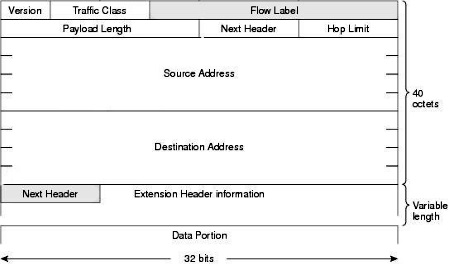The IPv6 Flow Label field is a new field used to tag a sequence or flow of IPv6 packets sent from a source to one or more destination nodes. This flow can be used by a source to label sequences of packets for which it requests special handling by the IPv6 routers, such as "real-time" service.

The Flow Label field is used to help identify all the packets within the same flow to ensure that all the packets receive the same type of handling by the IPv6 routers. Flow Label usage is described in RFC 6437, IPv6 Flow Label Specification. Routers keep track of the individual packet flows. Because routers do not have to independently process each packet's header, these multipacket flows are processed more efficiently.
Currently, there aren't a lot of implementations that look at the Flow Label. Two use cases have been defined: Equal Cost Multi-Path (ECMP), defined in RFC 6438, Using the IPv6 Flow Label for Equal Cost Multipath Routing and Link Aggregation in Tunnels, and Server Load Balancing (SLB), defined in RFC 7098, Using the IPv6 Flow Label for Load Balancing in Server Farms. Many systems set the Flow Label for packets that belong to different TCP sessions. A Flow Label set to 0 means the traffic is not associated with any flow.
About the Author
Rick Graziani has been an instructor of computer networking and computer science courses at Cabrillo College in Aptos, California since 1994. Rick also teaches networking courses in the Computer Engineering department at the University of California, Santa Cruz and is on the Curriculum Engineering team for Cisco Networking Academy.
Organizations are increasingly transitioning to IPv6, the next generation protocol for defining how devices of all kinds communicate over networks. Now fully updated, IPv6 Fundamentals offers a thorough, friendly, and easy-to-understand introduction to the knowledge and skills you need to deploy and operate IPv6 networks.
Leading networking instructor Rick Graziani explains all the basics simply and clearly, step-by-step, providing all the details you'll need to succeed. You'll learn why IPv6 is necessary, how it was created, how it works, and how it has become the protocol of choice in environments ranging from cloud to mobile and IoT.
Graziani thoroughly introduces IPv6 addressing, configuration options, and routing protocols, including EIGRP for IPv6, and OSPFv3 (traditional configuration and with address families). Building on this coverage, he then includes more in-depth information involving these protocols and processes.
This edition contains a completely revamped discussion of deploying IPv6 in your network, including IPv6/IPv4 integration, dynamic address allocation, and understanding IPv6 from the perspective of the network and host. You'll also find improved coverage of key topics such as Stateless Address Autoconfiguration (SLAAC), DHCPv6, and the advantages of the solicited node multicast address.
Throughout, Graziani presents command syntax for Cisco IOS, Windows, Linux, and Mac OS, as well as many examples, diagrams, configuration tips, and updated links to white papers and official RFCs for even deeper understanding.
• Learn how IPv6 supports modern networks encompassing the cloud, mobile, IoT, and gaming devices
• Compare IPv6 with IPv4 to see what has changed and what hasn't
• Understand and represent IPv6 addresses for unicast, multicast, and anycast environments
• Master all facets of dynamic IPv6 address allocation with SLAAC, stateless DHCPv6, and stateful DHCPv6
• Understand all the features of deploying IPv6 addresses in the network including temporary addresses and the privacy extension
• Improve operations by leveraging major enhancements built into ICMPv6 and ICMPv6 Neighbor Discovery Protocol
• Configure IPv6 addressing and Access Control Lists using a common topology
• Implement routing of IPv6 packets via static routing, EIGRP for IPv6, and OSPFv3
• Walk step-by-step through deploying IPv6 in existing networks, and coexisting with or transitioning from IPv4
Reader Lucas Schultz says, "If you are looking to take the CCNA and IPv6 is not clear to you after Cisco material, this is the book you. This is the best in depth discuss about IPv6 how it works and the mechanisms to make it work. Author made it very easy to read and understand. Highly recommend this book to IT personnel or CCNA certification.



